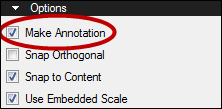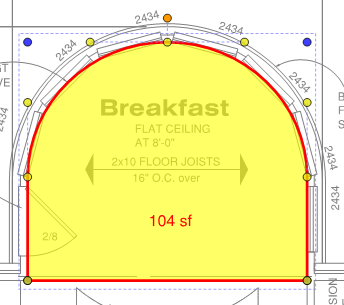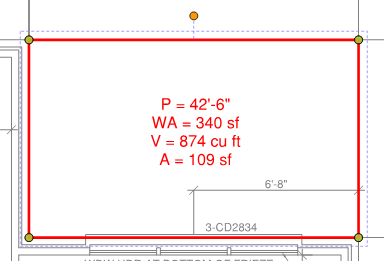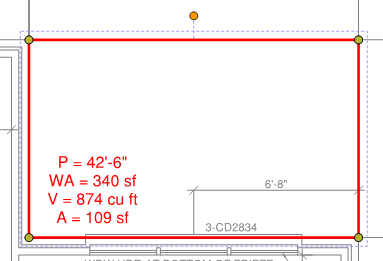Before taking a measurement, be sure to calibrate the drawing to a known value. This ensures measurements will be accurate even if scaling occurred at the time of PDF creation.
The Measure tool is a good way to take multiple related measurements from a PDF file, which is useful in the estimation process. Measurements can persist as markups, allowing for processing and summarization through the Markups list, which is also useful for estimation and takeoffs, or be temporary. When the Measure Tool is activated, the last measurement mode used is automatically selected. This makes it easier to employ your most commonly used measurement mode. This section will demonstrate using the Measure tool to take several types of common measurements.
Before taking a measurement, be sure to calibrate the drawing to a known value. This ensures measurements will be accurate even if scaling occurred at the time of PDF creation.
Length measurements, which calculate a single, linear measurement, are among the most common. For a multi-segment line, like an open perimeter, see Measuring Open Perimeters below.
To take a length measurement:
In the Options section of the Measurements tab, ensure Make Annotation is checked. If it is not, the measurement will be temporary.


Tips:
 the extension lines when there is enough room, otherwise they will automatically position themselves outside
the extension lines when there is enough room, otherwise they will automatically position themselves outside the extension lines.
the extension lines.Revu typically takes standard measurements in straight lines, but you can add arcs to those lines in order to measure curved areas easily. You can also configure Revu to draw using curves automatically in the Markup Preferences. The example below outlines the basic procedure using an Area Measurement. Refer to the Working with Curved Markups section for more detail.
To take a curved measurement:
In the Options section of the Measurements tab, ensure Make Annotation is checked. If it is not, the measurement will be temporary.

Click to define several points around the area. In the following example, five points have been used, numbered 1-5.

Right-click on the line near point B and select Convert to Arc.

The measurement is updated as you edit the markup shape.
Tips:
Perimeter measurements are often used to calculate the total length of all sides of a given shape. Though they can appear similar to an Area Measurement, they are not closed shapes, and thus they can be used to calculate the length of a multi-segment line, such as when estimating cable or wiring runs.
To measure an open perimeter:
In the Options section of the Measurements tab, ensure Make Annotation is checked. If it is not, the measurement will be temporary.

Tips:
Several measurement markups have the ability to show more measurements than they do by default, including Area, Perimeter and Volume measurements. This can enable a single measurement to serve multiple estimation functions for the same area of a drawing.
To show all measurements:
Depending on what type of measurement you selected, the following measurements appear:

When an Area or Volume measurement is taken, the values are shown in the center of the measurement. With Perimeter measurements, the values are shown along the last line segment placed. To reposition these values, hold the SHIFT key while you click and drag to the desired location. Here, the measurements of an Area have been repositioned to the lower corner of the markup.
